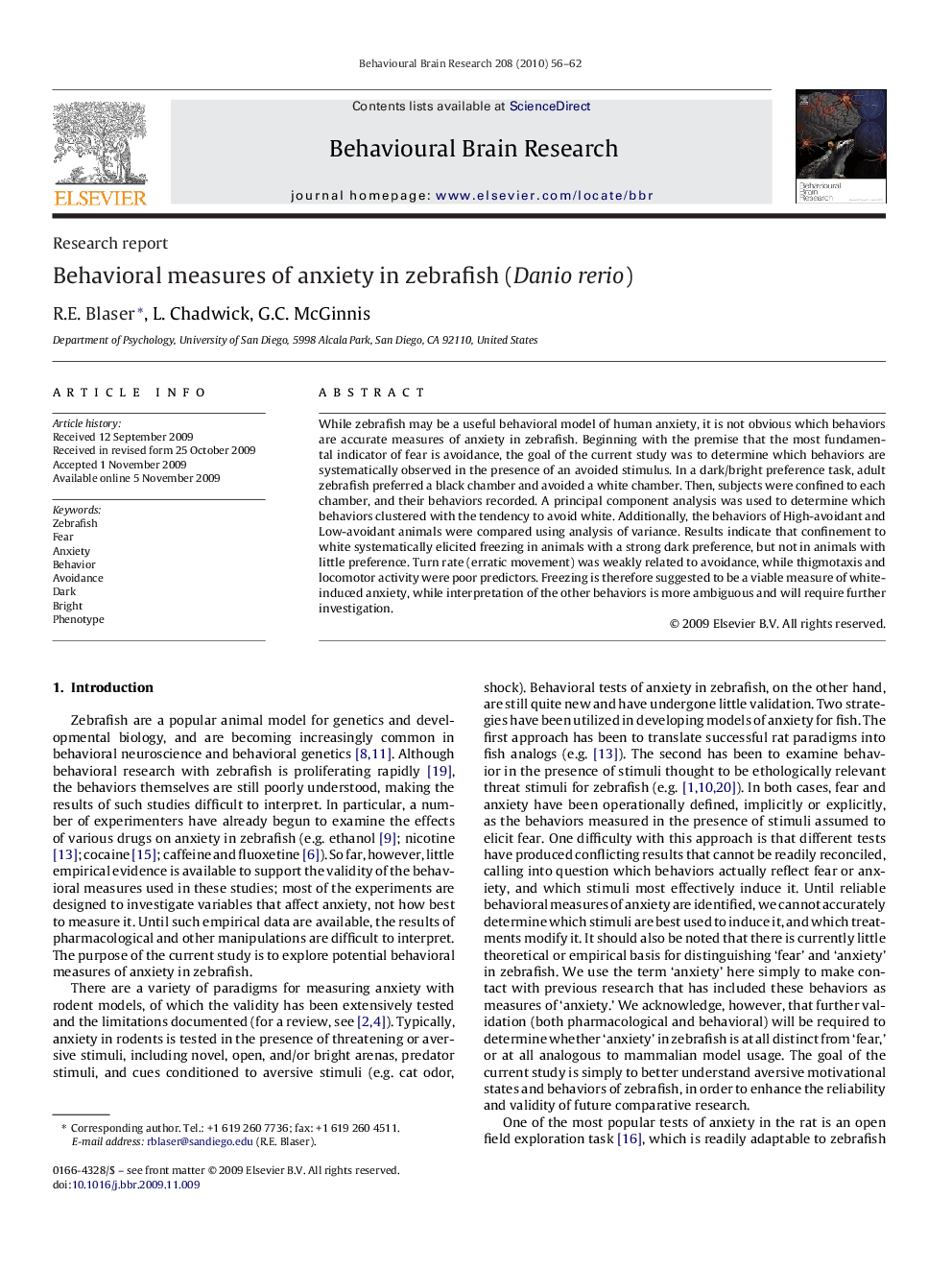| Article ID | Journal | Published Year | Pages | File Type |
|---|---|---|---|---|
| 4314276 | Behavioural Brain Research | 2010 | 7 Pages |
While zebrafish may be a useful behavioral model of human anxiety, it is not obvious which behaviors are accurate measures of anxiety in zebrafish. Beginning with the premise that the most fundamental indicator of fear is avoidance, the goal of the current study was to determine which behaviors are systematically observed in the presence of an avoided stimulus. In a dark/bright preference task, adult zebrafish preferred a black chamber and avoided a white chamber. Then, subjects were confined to each chamber, and their behaviors recorded. A principal component analysis was used to determine which behaviors clustered with the tendency to avoid white. Additionally, the behaviors of High-avoidant and Low-avoidant animals were compared using analysis of variance. Results indicate that confinement to white systematically elicited freezing in animals with a strong dark preference, but not in animals with little preference. Turn rate (erratic movement) was weakly related to avoidance, while thigmotaxis and locomotor activity were poor predictors. Freezing is therefore suggested to be a viable measure of white-induced anxiety, while interpretation of the other behaviors is more ambiguous and will require further investigation.
